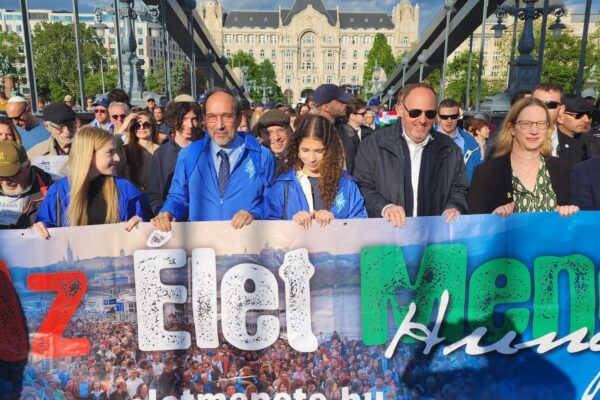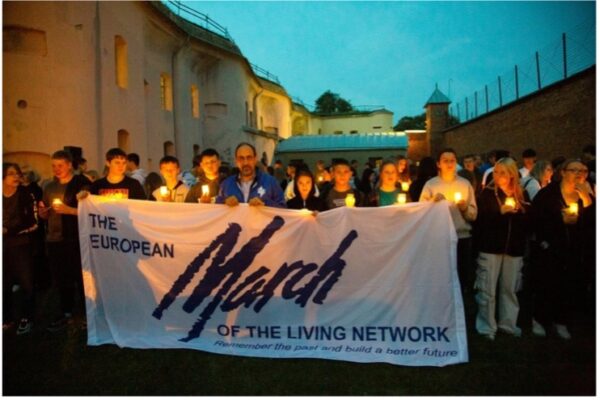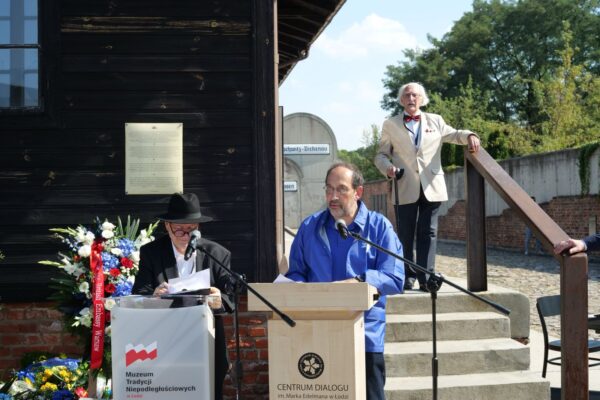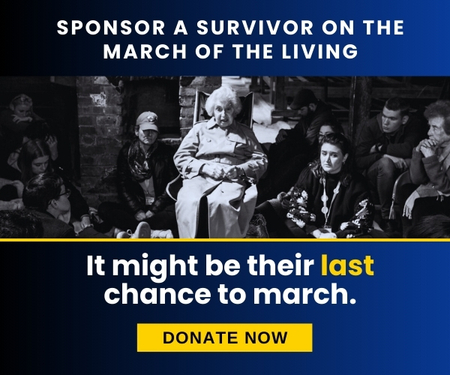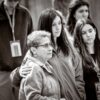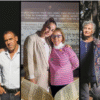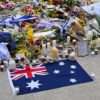
March of the Living from Vilnius to Ponary (EMOTL)
Hundreds of students, ambassadors, members of the Jewish community and Lithuanian officials took part in the March of the Living in Lithuania, commemorating the Holocaust of Lithuanian Jewry. The event began with a ceremony at the site of the former Vilnius Ghetto and continued with a solemn march to the mass graves of Ponary.
The Holocaust in Lithuania
On the eve of WWII, Lithuania had a Jewish population of over 160,000, about 7 percent of Lithuania’s population. By the war’s end about 90 percent of Lithuanian Jews were murdered, one of the highest victim rates in all of Nazi occupied Europe. The Nazis and their local collaborators almost completely obliterated the Jewish community in Lithuania, in what is now called the “Holocaust by Bullets,” when Jews of Eastern Europe were shot and buried in mass graves.
History
For centuries, the Jewish community in Lithuania was characterized by a rich history of Jewish thought, scholarship, and culture and in the early 20th century by Jewish workers’ movements and Zionism.
In the 18th century, Vilnius was home to the venerated Vilna Gaon (“the genius from Vilnius”), the foremost leader of the Misnagdic (non-Hasidic) Jewish community and one of the most influential Talmudists in Jewish history. Lithuania soon became a global center of Talmudic study, housing renowned yeshivas such as Mir, Ponevezh, Slabodka, Novardok, and Telshe. As Yad Vashem notes: “On the eve of the Holocaust, the Jewish community of Vilna was the spiritual hub of Eastern European Jewry — a vibrant center of learning, political life, creativity, and tradition, bustling with cultural and religious activity, movements and parties, educational institutions, libraries, and theaters. Known throughout the Jewish world as the “Jerusalem of Vilna,” it was a community of rabbis and gifted Talmudic scholars, intellectuals, poets, authors, artists, craftspeople, and educators — a true spiritual center of the first order.”
With the outbreak of WWII in 1939, the plight of Lithuanian Jewry took a dramatic turn for the worse, first under Soviet occupation, and then under Nazi rule. In June 1941 the Germans conquered Vilna and set up a joint administration with the local Lithuanians and the systematic murder of Jews of Lithuania began. By 1944 most of Lithuania’s Jews had been murdered.
Ponary
The Ponary massacre – which took place near the railway station at Ponary close to Vilnius between July 1941 and August 1944 – involved the mass execution of some 100,000 people. Most of the victims were Jews (70,000), along with large numbers of Poles (20,000), and Russians (8,000 POWs), who were murdered by the Nazis and their Lithuanian collaborators. Most of the victims came from the nearby Vilna Ghetto.
The Ninth Fort
One of the most infamous sites of the mass murder of Jews in Lithuania was the Ninth Fort. Built in the 19th century, the Ninth Fort was a series of forts located four miles from the center of Kovno. Over 50,000 Jews, mostly from Kovno, were executed by Nazis and Lithuanian collaborators during the German occupation, from June 1941 to the summer of 1944.
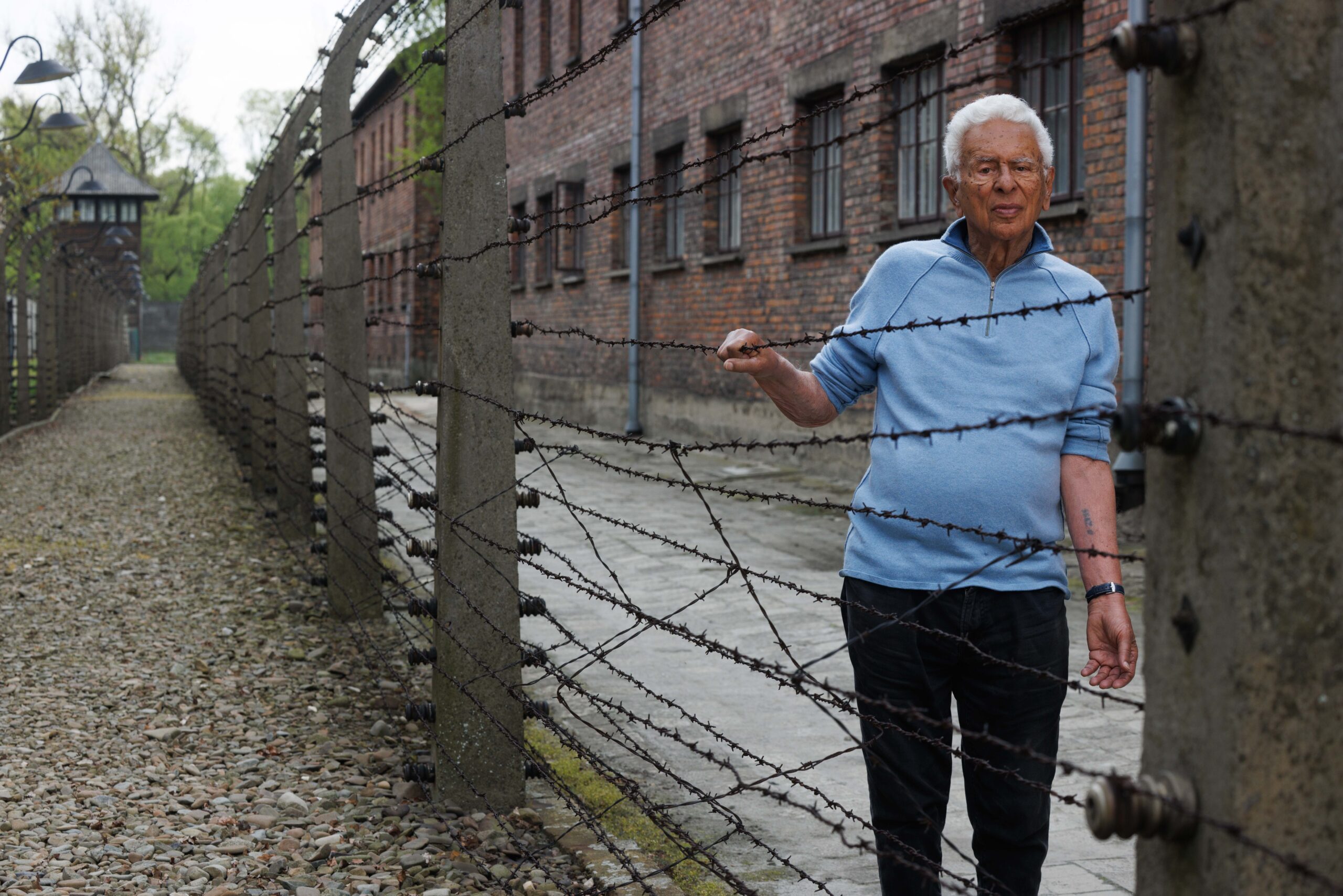
Arnold Clevs in Auschwitz at the 2025 March of the Living (Ziv Koren)
Among those remembering was Holocaust Survivor Arnold Cleves, who recounted how his family was captured in 1941 by Lithuanian soldiers and sent to the Ninth Fort. His mother convinced an officer that her husband had served in the Lithuanian army during World War I, and the family was temporarily released. They were later deported to a labor camp and then to Auschwitz – Birkenau. Arnold survived the camp, a death march, and was ultimately liberated from Dachau by American forces, together with the group later known as the 131 Lithuanian Boys.
Reflecting on his return to Poland, Arnold, who also marched this year on the March of the Living in from Auschwitz to Birkenau on Holocaust Remembrand Day, said: “To march as a Jew, as a free man, with my children and grandchildren, is the greatest victory for me.” Ahead of the march in Lithuania, he added: “The Jews contributed so much to Lithuanian culture. We were very patriotic Lithuanians, but unfortunately, we were not treated well.” Arnold urged students not to repeat history’s mistakes: “Help the State of Israel.”
AMPLIFY SURVIVORS VOICE
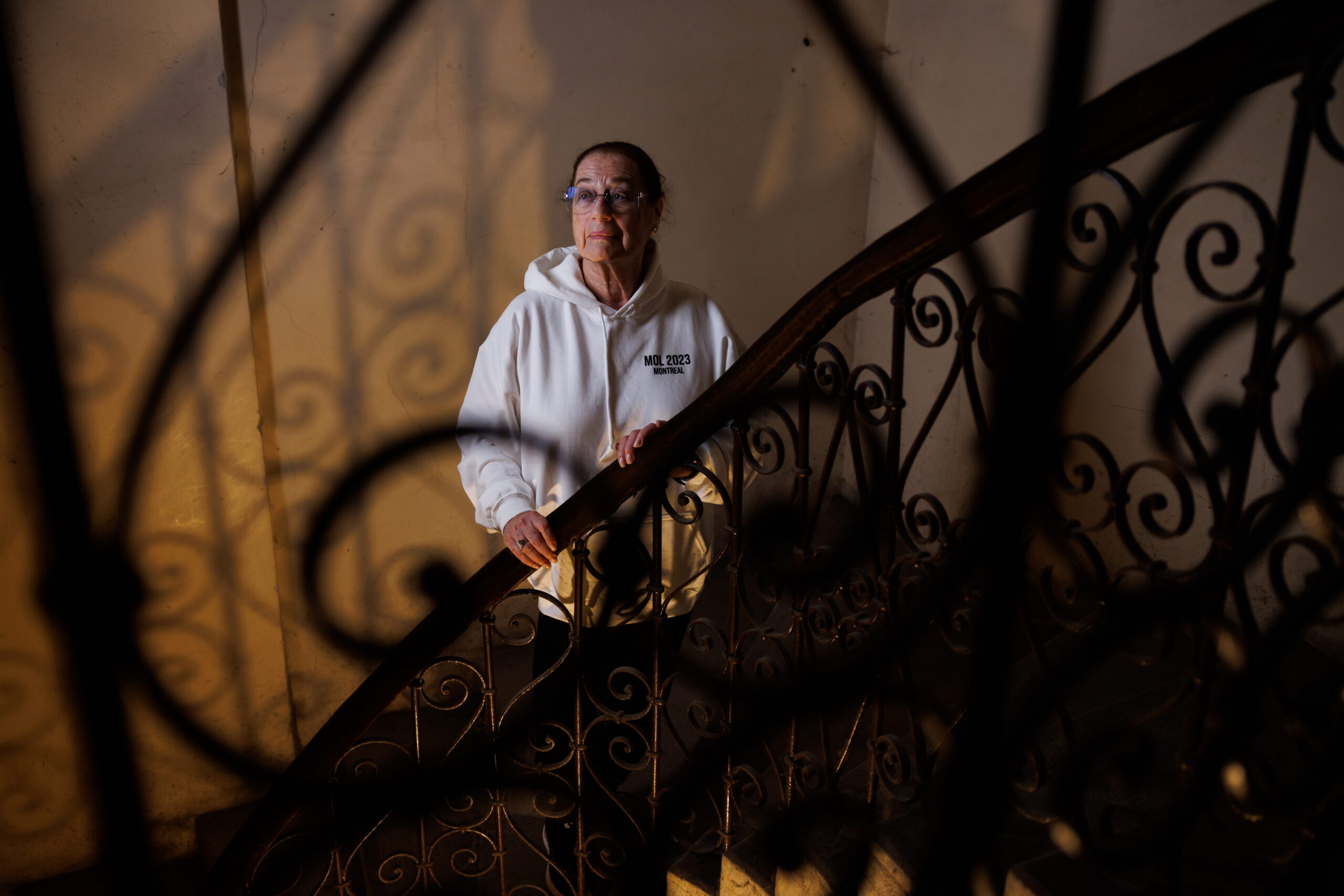
Aviva Ptack at the March of the Living (Ryan Blau)
Aviva Ptack was born as Leba Deitch in 1940 in Kovno, Lithuania, to Leah and Abba Deitch. “Lovingly they gave me life, and lovingly they saved my life…Yet I have no memories of them.” In 1941, the Nazis ordered the Jews of Kovno to relocate to a nearby ghetto. Her parents underwrote the purchase of a farm for a gentile couple in a community in which no one knew them — on the condition that they take Leba/Aviva along with their own family.
“After the war, I was moved 4 times before my adoptive mother and I found each other.”
Her biological parents were killed in the Kovno ghetto. “Growing up, I always thought my adoptive mother was my biological mother….It was only at the time I was getting married that I discovered my mother was not my biological mother, and my father was my biological uncle.” After both parents died, Aviva found out her “father” was an inmate at Dachau for 3 years. Aviva knew that her adoptive parents had survived the Holocaust but knew little of their past. But growing up in her home, “the Holocaust was a subject never to be discussed.”
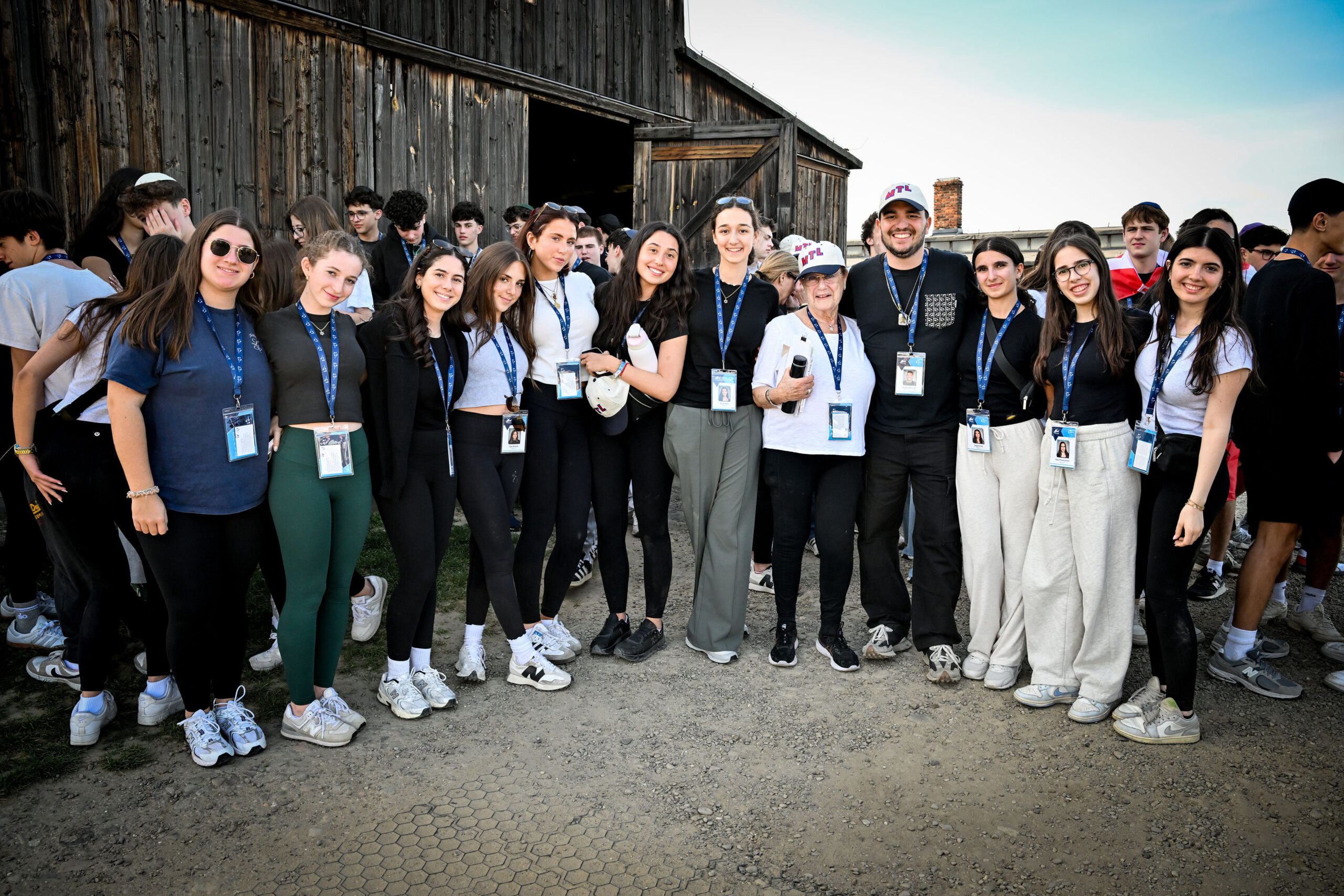
Aviva Ptack with Canadian students at the March of the Living (Ryan Blau)
Aviva, a March of the Living survivor – educator from Montreal, Canada, says that to this day, even after sharing her Holocaust story with many students, she still finds it difficult to do so – but continues with her efforts. “I want to try and reach some young people who might be able to make a difference in this crazy world that we live in. If I get two or three at a time, then I feel like I’ve done something to make a difference.”
SPONSOR HOLOCAUST SURVIVORS
Abba Kovner – Leader of the Jewish Resistance
As a young boy, Abba Kovner was a member of the Hashomer Hatzair Zionist Youth movement. When Kovner learned of the mass murders in Ponary, he became convinced of the need for Jewish resistance and became involved in establishing a Jewish fighting force, known as the Vilna Ghetto Partisans.
On January 1, 1942, Kovner read his Ghetto Manifesto to his fellow Zionist youth, urging the Jews to rebel against the Nazis:
They Shall Not Take Us Like Sheep to the Slaughter!
Thanks to AI technology developed by Israeli startup D-ID, the International March of the Living presented at the 2023 March of the Living Abba Kovner’s courageous story in his own words, as if he were standing before us.
WATCH & LISTEN TO ABBA KOVNER MANIFESTO
After failing to convince the Jews of the Vilna Ghetto to fight back against the Nazis, Kovner fled Vilna for the nearby forests where he became the commander of the partisans in the Vilna area. After the war, Kovner was a founder of the “Habricha” postwar emigration movement and later made Aliya to Israel. In Israel, he joined the Israel Defense Forces and fought in Israel’s War of Independence.
